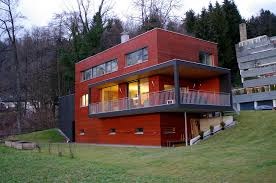The Value Of Passive Building for Cozy Living
Living in a passive house means saving approximately 90% of energy compared to the average property. This is done through reduced energy usage and refined architectural details.
In general, a passive house sees a reduction in heating oil usage at a rate of 1.5 litres/square metre of space. This is far superior to other types of properties. The only time similar savings are seen are in hot climates where most of the emphasis is on cooling rather than heating. Passive houses are known for offering significant comfort while saving quite a bit through energy reduction inside the building. This means body heat, the sun, and home appliances are used as sources of heat.
Below an Auckland passive house builder gives some insights into the passive house movement.
 When a passive house is being set up, it has to meet strict energy and design guidelines to make sure everything is cozy. This includes fine-tuning how heat is saved within the property while offering a good amount of insulation at the same time. This is the best way to make sure thermal bridging doesn’t become an issue. When a passive house is being designed, the simple goal is to ensure everything is as airtight as possible. This ensures conditioned air doesn’t slip through the cracks and start to lead to energy inefficiencies. A strategy that is employed involves installing double or triple-glazed windows along with high-performance doors. These can keep the airtight seal needed to store heat inside the property without causing overheating during the warmer months. The goal is to make the most of the energy that’s coming from the sun while maintaining a good ventilation setup to stay fresh.
When a passive house is being set up, it has to meet strict energy and design guidelines to make sure everything is cozy. This includes fine-tuning how heat is saved within the property while offering a good amount of insulation at the same time. This is the best way to make sure thermal bridging doesn’t become an issue. When a passive house is being designed, the simple goal is to ensure everything is as airtight as possible. This ensures conditioned air doesn’t slip through the cracks and start to lead to energy inefficiencies. A strategy that is employed involves installing double or triple-glazed windows along with high-performance doors. These can keep the airtight seal needed to store heat inside the property without causing overheating during the warmer months. The goal is to make the most of the energy that’s coming from the sun while maintaining a good ventilation setup to stay fresh.
The charm of a passive house is that these methods can be applied to any space. This can include apartments, condos, detached houses, and even tiny houses. The premise is to understand indoor temperatures and how to manipulate the property to become energy-efficient. When done right, this leads to a long list of benefits. Along with saving on energy, passive houses also become comfortable because of the added insulation and top-tier construction. Even when the weather is bad outside, the property continues to thrive due to the sealed setup. All of this is done without impacting the indoor air quality due to mechanical ventilation.
Passive houses work wonderfully in all conditions whether it’s the dead of winter or the peak of summer. All of this is done without overspending and ensures everything is as efficient as possible through appropriate insulation. The design also doesn’t incorporate thermal bridging, which ensures weak spots don’t develop around the property such as cold corners. The set-up also ensures moisture levels are regulated throughout the year.
These structures are known for remain cost-efficient because you don’t have to splurge on HVAC systems. Everything is in line to make sure the property is energy-efficiency by a significant margin.
When it comes to the numbers, passive houses are known to keep the energy consumption down to 15kWh/square metre annually. This is done by keeping the property airtight while also maximising the air change rates. This is a method that delivers amazing value and leads to quality buildings that are amazing to reside in year-round. A passive house is simply an energy-efficient property that eliminates the need for excessive energy resources.
Cain Built is an Auckland passive home builder. Take a look at their website.